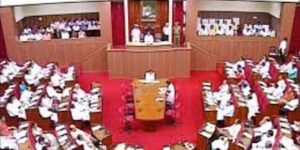It has taken a magnum opus on Veer Savarkar to put in print a memory that still lives and torments millions: The memory of the 1948 anti-Maharashtrian Brahmin genocide, a “wilfully erased chapter of history.” While writing for his concluding volume on the freedom fighter – Savarkar (Part 2): A Contested Legacy, 1924-1966 – author Vikram Sampath’s crowdsourcing efforts through social media drew an outpouring of tragic personal tales from survivors and descendants of the 1948 pogrom. The book captures how the carnage started from Bombay and Pune before spreading to Nagpur, Satara, Sangli, Miraj, the Patwardhan States, Belgaum, Kolhapur, where thousands of Brahmins were either massacred or their properties destroyed; and most villages in the state were ethnically cleansed of Brahmins. Thanks to laws like the Press Act, the media was silent on it – as it was on the coverage of the Partition Holocaust against Hindus and Sikhs in the newly created Pakistan, and its Kashmir horrors. Washington Post reported on wave of looting, arson and killings; New York Times said how “the communal riots quickly swept Bombay when news of Mr Gandhi’s death was received (January 30, 1948).” The accounts of DP Mishra, home minister of Central Provinces, point to a systematic pogrom against Brahmins and how no FIRs were lodged. Says Sampath: “The tragedy apart, denying its very occurrence makes it a doubly chilling crime.”

 Politics
Politics Business
Business Entertainment
Entertainment Sports
Sports Celebrities
Celebrities




